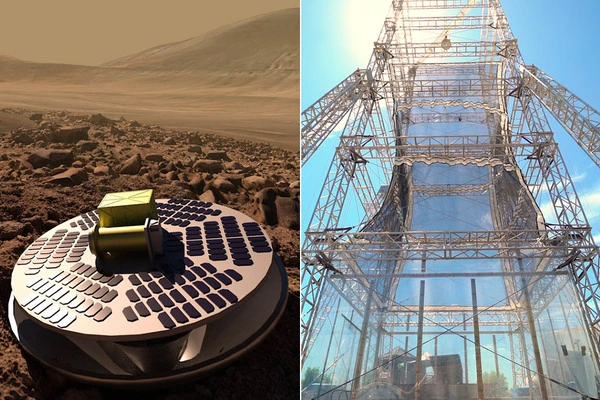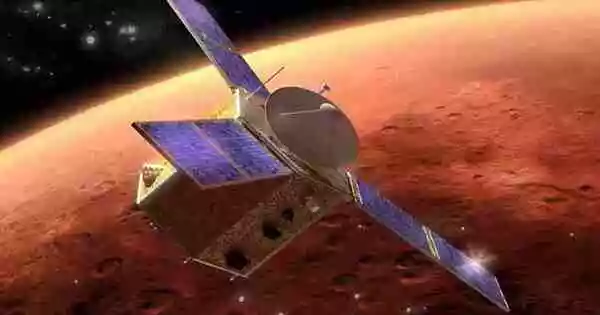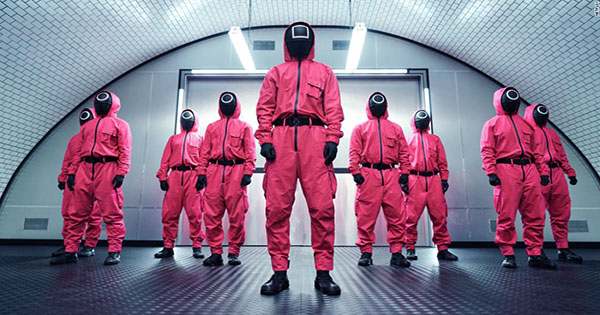NASA has successfully landed nine times on Mars, relying on cutting-edge parachutes, massive airbags, and jetpacks to safely land spacecraft. Engineers are currently testing whether or not crashing is the quickest way to reach the Martian surface. An experimental lander design called SHIELD (Simplified High Impact Energy Landing Device) would use an accordion-like, collapsible base that acts like a car’s crumple zone and absorbs the energy of a hard impact, rather than slowing a spacecraft’s high-speed descent.
The new design could drastically reduce the cost of landing on Mars by simplifying the perilous entry, descent, and landing process and expanding landing site options.
“We think we could go to more dangerous areas, where we wouldn’t want to risk trying to place a billion-dollar rover with our current landing systems,” said Lou Giersch of NASA’s Jet Propulsion Laboratory in Southern California, SHIELD’s project manager. “Perhaps we could land several of these in various difficult-to-access locations to build a network.”
Car crashes, Mars landings
Much of SHIELD’s design borrows from work done for NASA’s Mars Sample Return campaign. The first step in that campaign involves the Perseverance rover collecting rock samples in airtight metal tubes; a future spacecraft will carry those samples back to Earth in a small capsule and safely crash land in a deserted location.
We think we could go to more dangerous areas, where we wouldn’t want to risk trying to place a billion-dollar rover with our current landing systems. Perhaps we could land several of these in various difficult-to-access locations to build a network.
Lou Giersch
Studying approaches for that process led engineers to wonder if the general idea was reversible, said Velibor Ćormarković, SHIELD team member at JPL. “If you want to land something hard on Earth, why can’t you do it the other way around for Mars?” he said. “And if we can do a hard landing on Mars, we know SHIELD could work on planets or moons with denser atmospheres.”
To test the theory, engineers needed to prove SHIELD can protect sensitive electronics during landing. The team used a drop tower at JPL to test how Perseverance’s sample tubes would hold up in a hard Earth landing. Standing nearly 90 feet (27 meters), it features a giant sling—called a bow launch system—that can hurl an object into the surface at the same speeds reached during a Mars landing.
Ćormarković previously worked for the auto industry, testing cars that carried crash dummies. In some of those tests, the cars ride on sleds that are accelerated to high speeds and crashed into a wall or deformable barrier. There are a number of ways to accelerate the sleds, including using a sling akin to the bow launch system.
“The tests we’ve done for SHIELD are kind of like a vertical version of the sled tests,” Ćormarković said. “But instead of a wall, the sudden stop is due to an impact into the ground.”

Smashing success
The team gathered at the drop tower on August 12 with a full-size prototype of SHIELD’s collapsible attenuator—an inverted pyramid of metal rings that absorb impact. To simulate the electronics carried by a spacecraft, they hung the attenuator from a grapple and inserted a smart phone, a radio, and an accelerometer.
They were sweating as they watched SHIELD slowly rise to the top of the tower. “Hearing the countdown gave me goose bumps,” Nathan Barba, another JPL SHIELD project member, said. “The entire team was eager to see if the objects inside the prototype would withstand the impact.”
The wait was over in less than two seconds, when the bow launcher slammed SHIELD into the ground at approximately 110 miles per hour (177 kilometers per hour). That is the speed attained by a Mars lander near the surface after being slowed by atmospheric drag from its initial speed of 14,500 miles per hour (23,335 kilometers per hour) when it enters Mars’ atmosphere.
Previous SHIELD tests used a dirt “landing zone,” but for this test, the team laid a steel plate 2 inches (5 centimeters) thick on the ground to simulate a landing on Mars. SHIELD was hit with a force of about 1 million newtons, which is equivalent to 112 tons smashing against it, according to the onboard accelerometer.
SHIELD impacted at a slight angle, then bounced about 3.5 feet (1 meter) into the air before flipping over, according to high-speed camera footage of the test. The team believes the bounce was caused by the steel plate, as there was no bounce in the previous tests.
When the team opened the prototype to retrieve the simulated electronic payload, they discovered that the onboard devices—including the smart phone—had survived. “The only hardware that was damaged were some plastic components that we didn’t mind,” Giersch explained. “This test was a success overall!”
What is the next step? In 2023, they will design the rest of a lander to see how far their concept can go.
















